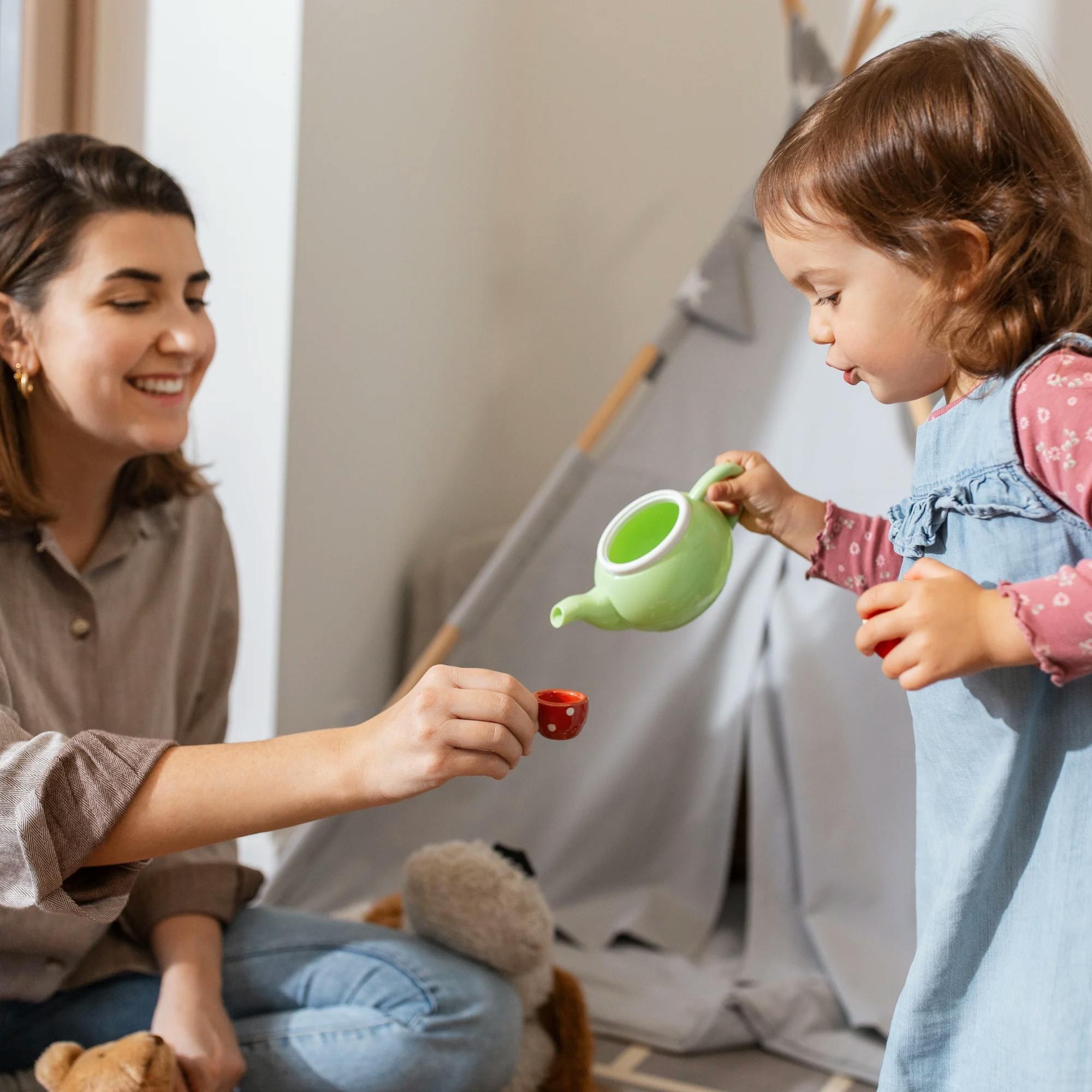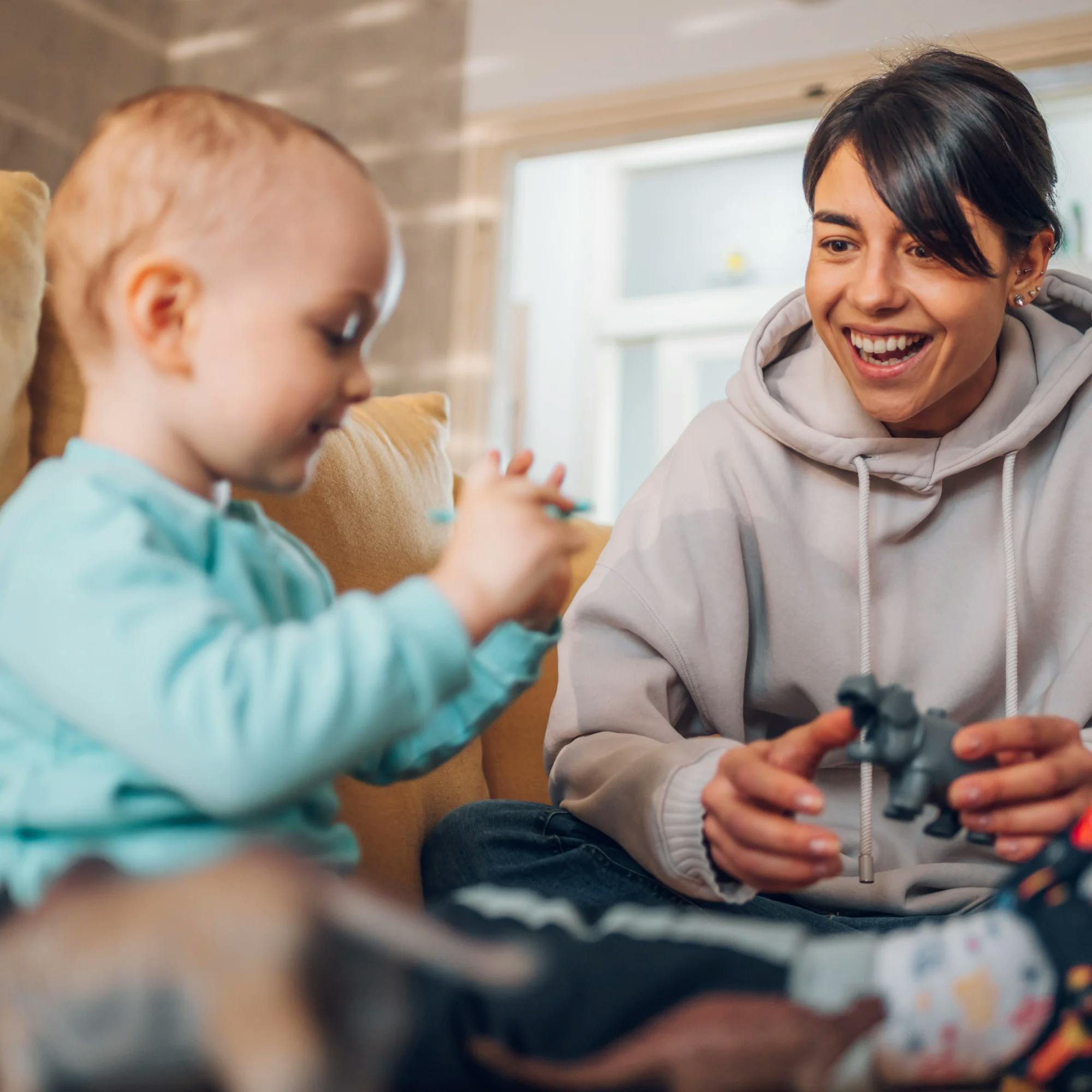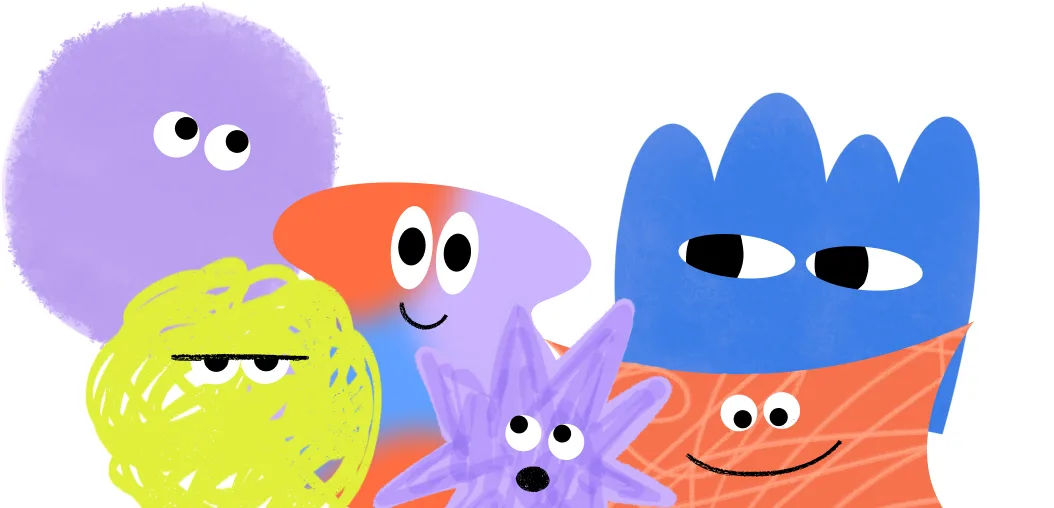Your child’s third year is an incredible time in their development. We know that parenting a toddler can be … unpredictable. But as experts in early childhood development, we speech therapists have a few tips to share about what to expect when your child turns 3! Read on to discover the top 4 things to know about parenting a 3-year-old, including insights from speech therapists who are parents themselves.
Free speech check
How well is your child speaking for their age? Find out with our free 5-minute online screener. No signup required, just answers.
 Start the screener
Start the screener1. They have clearer speech and longer conversations
At this age, kids are usually able to begin communicating more clearly and easily. This is because their speech articulation skills are improving, and they continue to understand and use more vocabulary words. All of the book reading, play time, and language modeling you’ve done up until this point is really paying off!
3-year-old articulation skills
By age 3, children should be able to pronounce the /b/, /n/, /m/, /p/, /h/, /w/, /d/, /g/, /k/, /f/, “ng,” and “y” sounds. Their speech should be understood by familiar listeners--people who are around them often--around 75% of the time.
3-year-old receptive language skills
One area of language development to pay attention to is called “receptive language.” Receptive language refers to the words a child can understand. There are many receptive language milestones you should be seeing in your child by age 3:
Can identify colors by name
Understands names of shapes
Understands family names (sister, grandma, etc.)
Begins to understand descriptive words like “big” or “bumpy”
Can follow multistep directions (“Put down your backpack, take off your coat, then come to the kitchen”)
3-year-old expressive language skills
Expressive language refers to how someone communicates, either verbally or nonverbally. Some specific skills you’ll likely see around age 3 include:
Asks who, what, where, when, and how questions, like "Where is Mommy?"
Uses plural “s” (such as “dogs” or “shoes)
Uses verbs with “ing,” like “walking” or “sleeping,” and can name these actions in pictures, such as when reading a book with you
Can express their ideas and feelings with words
Talks to you in conversation using at least two back-and-forth exchanges
Discusses what they've done that day
Says their first name when asked
2. They're ready for more socialization
Your little one may become more interested in playing with other children as they move through their third year. You can help foster this social growth by setting up playdates with friends, or helping your child if they’re not sure how to greet or interact with other kids at preschool or the park. (Remember to always watch your child and stay near them when they're in public places with unfamiliar people.)
The way children play grows and changes as they develop. Typically, when your child first turns 3, they may play alongside other kids but not interact with them much. This is called parallel play.
As your child gets closer to turning 4, they’ll likely begin to try associative play. With this type of play, they may play alongside other kids and share toys and items, but they will likely still do their own thing. For example, two 3-year-olds might play in the sandbox together and share the same buckets and shovels, but they’ll each build their own sandcastles.
This is all very normal and typical for this age. To keep the growth going, it’s important to give your 3-year-old chances to socialize and interact with others. So plan some playdates and playground visits!

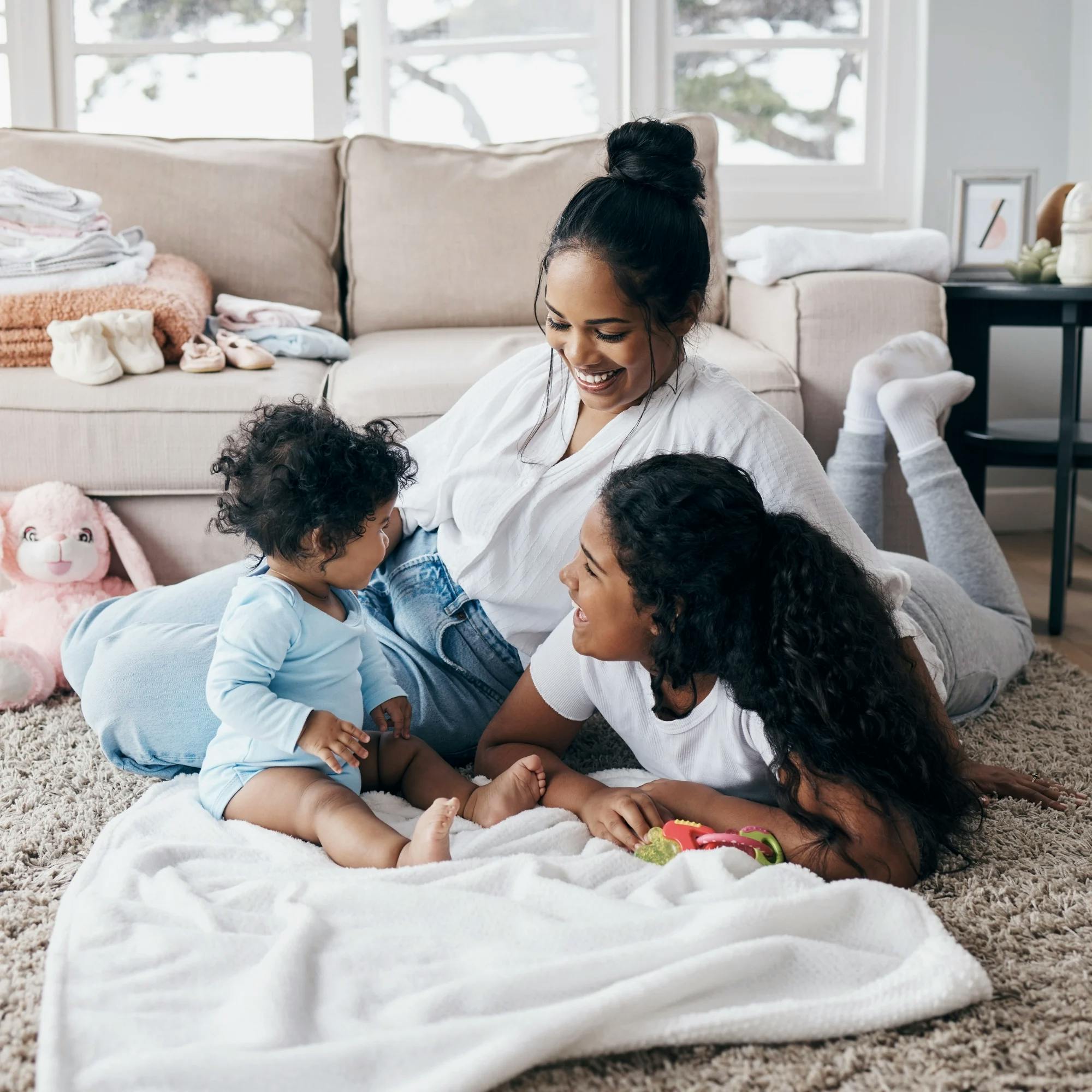
3. They want more independence
As toddlers grow, they crave more independence. You may have seen it in your child at 18 months or 2 years old, and you’re probably still going to see it at age 3! While the power struggles may not always be fun, overall, this is a good thing. We want to see toddlers trying to reach new goals and attempt more challenging tasks.
Alexis Irazoque, M.S., CCC-SLP, is an Expressable speech therapist and toddler mom. As she explains, “You’re going to hear a lot of ‘I can do it myself!’ at this age. It’s important to build in opportunities for your 3-year-old to feel in control. One easy way to do this is to offer your child choices–ones that you’re OK with them choosing, of course! So you can try things like, ‘Which book do you want to read? Elmo, or Curious George?’
“You can also try things like allowing them to attempt putting on their socks and shoes by themselves. This may require you to allow more time to get out the door. But giving them the time and space to do something themselves may help them feel calmer and happier in the long run!”

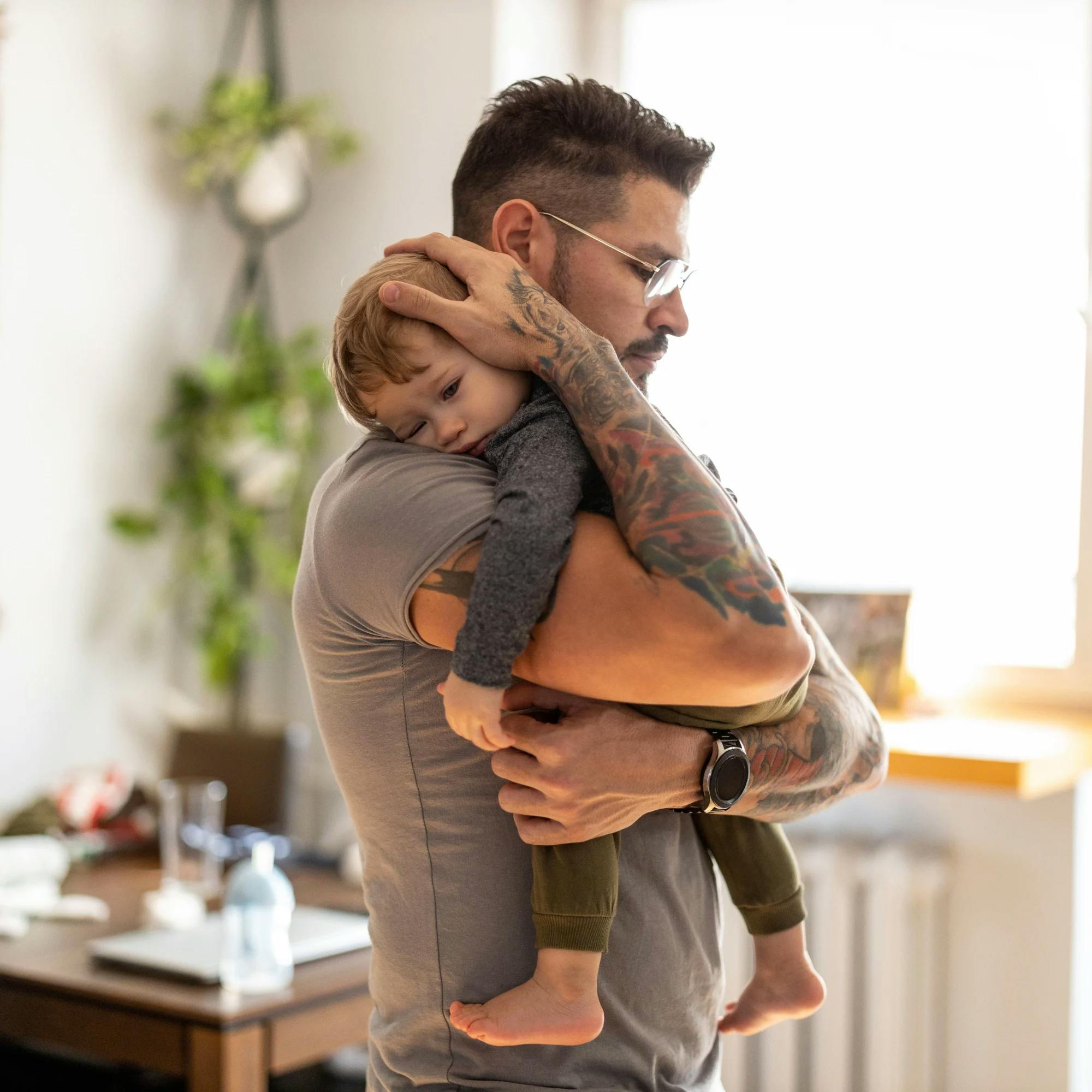
4. They're learning about emotions–and they may have big feelings
You may see your child showing more emotions at this stage. For example, when they want more independence, any disappointment related to not getting what they want may make them feel upset.
At this age, they’re also understanding more about their daily routines and may have more awareness and expectations. For example, maybe now when you drive to the grocery store, your child realizes it’s right next to the ice cream shop. When they ask to get ice cream and you tell them you can’t today, this may lead to some big feelings!
Irazoque explains, “When things like this happen, you need to essentially ‘OK their emotions’ and help your child through them, despite how big or small you may think their feelings should be.
“You can also model coping strategies. For example, you might say, ‘It’s not time for ice cream today. It's OK to be mad. Let's take three deep breaths.’"
Offering wait time and silence during tantrums is crucial, as well as staying calm yourself. You may feel like you need to talk to your child. But when a child isn’t regulated, they can’t process what you’re saying.
Jessica Stragauskas, M.S., CCC-SLP, another speech therapist (and mom!), has this advice about tantrums: “Offering wait time and silence during tantrums is crucial, as well as keeping a calm demeanor yourself. It can be tempting to feel like we need to verbally troubleshoot and just start talking to our child. But when a child isn’t regulated, they're not able to process what you’re saying. Try offering choices: ‘When you’re ready, we can go for a walk, get a snack, or build with your blocks.’
“Once your child is calm and in a better regulated state, that’s the appropriate time to dissect what occurred and how they were feeling, if need be,” Stragauskas continues. “Using picture cards or visuals to identify their emotions is helpful, too. By this age, kids are ready to learn more about emotions and may be able to better express their feelings once they know the words to use!”

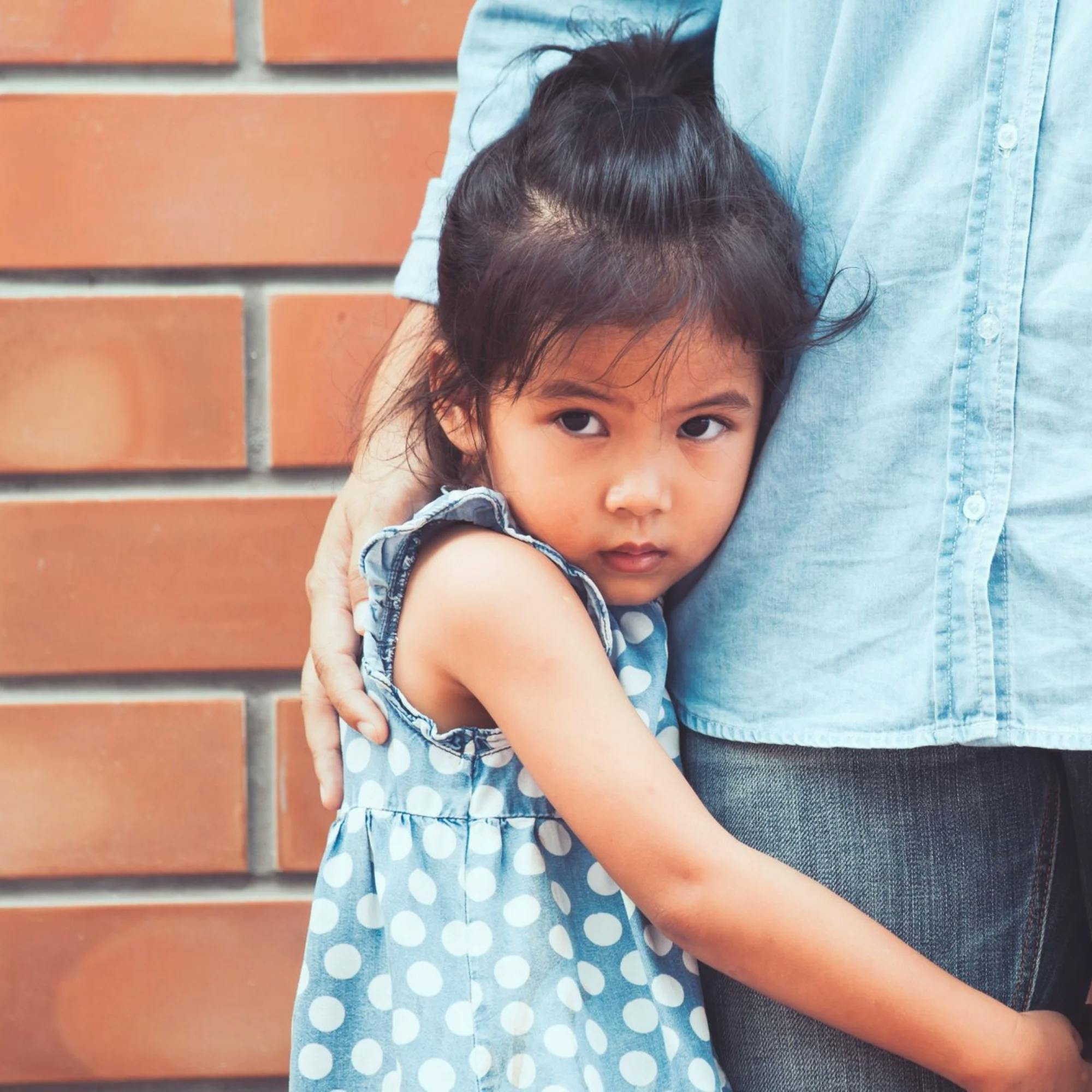
Find out if your toddler is on track with our free speech screener
Knowing what to expect with your 3-year-old’s development can help you support them as they learn and grow. You’ll be better prepared to help them through all their new changes.
If you ever have questions about your child’s development, be sure to talk with your child’s pediatrician. They’re there to help! If you have concerns about your child’s speech and language, you can contact a speech therapist as well. Speech therapists are communication experts, and they’re skilled in early intervention treatment for 3-year-olds.
Wondering if your child is on track with their language development? Take our easy self-screener to find out. The questions are tailored by age, and you’ll get personalized results that let you know if a speech evaluation is recommended.
How Expressable Can Help
Concerned your child isn't reaching age-expected milestones? Looking for communication support from a professional? Expressable is a national online speech therapy practice serving children and adults. We treat all major areas of communication and feeding, offer flexible hours including evenings and weekends, and accept most major health insurance plans. We’re proud to have earned more than 3,000 5-star reviews from our clients (4.9/5 average).
Our therapy model is centered on parent and caregiver involvement. Research proves that empowering caregivers to participate in their loved one’s therapy leads to better outcomes. That’s why we combine live, 1-on-1 speech therapy with personalized education and home practice activities for faster progress.
Communication is more than words. It’s how we share how we feel and show who we are. We’re here to help you or your child do just that.
 Abby Barnes, M.S., CCC-SLP
Abby Barnes, M.S., CCC-SLP






